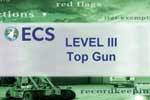Key Findings
The Europe vetronics market is projected to register a CAGR of 4.33% during the forecast period, 2022-2030. The growing military expenditure is one of the significant factors driving the vetronics market growth in Europe. Also, several nations in the region are making huge investments to modernize their land-based fleet with the latest available upgrades. However, countries like France and Italy are implementing cost-cutting on several defense programs.
Market Insights
Germany, Spain, Poland, the United Kingdom, Greece, France, Italy, and Rest of Europe are evaluated for the Europe vetronics market growth analysis. In France, the strategic developments and collaborations between government and market players boost the market growth. For instance, the French defense procurement agency (DGA) presented the SCORPION program’s conditional tranche 4 (TC4) contract to Nexter, Arquus, and Thales under the EMBR consortium. Similarly, in Germany, in 2020, General Dynamics European Land Systems was awarded a contract by the German procurement body BAAINBw. This entailed the supply of 80 secure EAGLE 6x6 vehicles with the latest consolidated electronics for the German Army’s ambulance corps.
Furthermore, in Poland, the Polish Armed Forces are set to enhance their operational and combat capabilities through the installation of new weapon systems and upgrading the ones already in use. This is projected to increase the nation’s security in an increasingly dangerous international context. Also, the Polish Armed Forces are increasingly prioritizing the updating of the 142 LEOPARD 2A4 Main Battle Tanks (MBTs) fleet to 2PL specifications. Such developments propel market growth in these countries.
Competitive Insights
Some of the prominent market players in the Europe vetronics market include Leonardo SPA, BAE Systems, Northrop Grumman, General Dynamics Corporation, etc.
Our report offerings include:
- Explore key findings of the overall market
- Strategic breakdown of market dynamics (Drivers, Restraints, Opportunities, Challenges)
- Market forecasts for a minimum of 9 years, along with 3 years of historical data for all segments, sub-segments, and regions
- Market Segmentation caters to a thorough assessment of key segments with their market estimations
- Geographical Analysis: Assessments of the mentioned regions and country-level segments with their market share
- Key analytics: Porter’s Five Forces Analysis, Vendor Landscape, Opportunity Matrix, Key Buying Criteria, etc.
- Competitive landscape is the theoretical explanation of the key companies based on factors, market share, etc.
- Company profiling: A detailed company overview, product/services offered, SCOT analysis, and recent strategic developments




